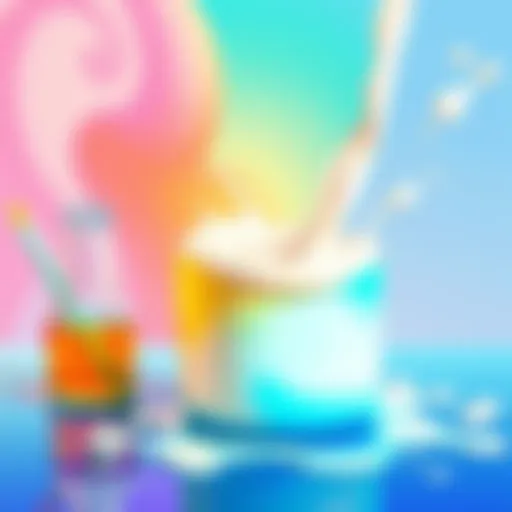The Science of Slime Activators Explained
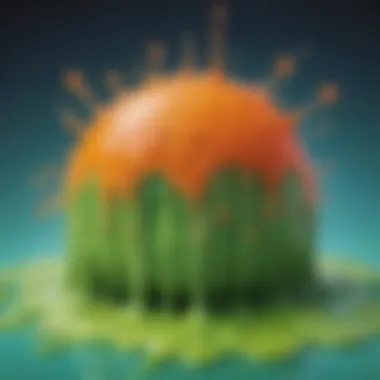
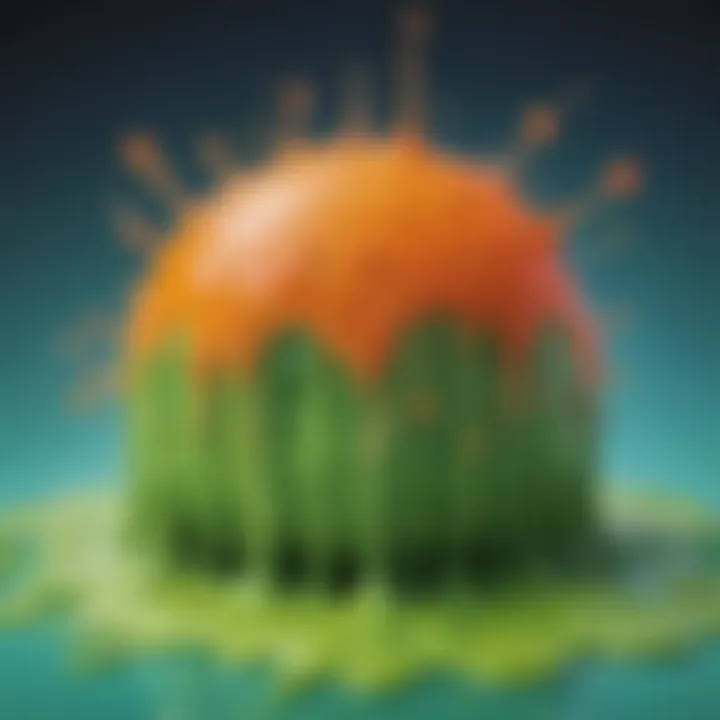
Intro
Slime has taken the world by storm, captivating the imaginations of children and adults alike. This gooey substance isn’t just a fun plaything but also a fascinating example of chemistry in action. The magic lies in slime activators—substances that help transform basic ingredients into a stretchy, moldable, and often colorful delight. In this exploration of slime activators, we’ll dive headfirst into the science behind slime formation, the different types of activators available, and how these substances can be harnessed in practical, educational experiments.
Science Fun Facts
Who doesn’t love a good fact? As we delve into the world of slime activators, here are some intriguing nuggets of information:
- Did you know? Slime has been around for several decades, with its roots tracing back to the 1970s with the introduction of toys like Silly Putty.
- Interesting Fact: The name "slime" often conjures up images of gooey monsters in movies, but in reality, the term also relates to real botanical slime produced by plants.
- Quirky Tidbit: While many think of bright colors and sparkles as a modern addition, some of the earliest slimes were simply a mixture of borax and glue, long before glitter became a must-have ingredient.
"Slime can teach kids about science, creativity, and even a dash of patience!"
Discover the Wonders of Science
Slime activators do not merely serve one function; they open a doorway to various scientific concepts. Here’s a look at some areas to explore:
- Chemical Reactions: Mixing the right activators with glue initiates an exciting chemical reaction that results in slime’s unique texture.
- Polymers: At its core, slime is a polymer, which explains its elastic properties.
- Viscosity and Temperature: The way slime behaves can change based on temperature, highlighting the concept of viscosity many kids learn about in school.
Incorporating educational videos or animations can make these ideas even more accessible. Watching a science experiment unfold can intrigue young minds and enhance their understanding. Parents and caregivers can find many of these resources on platforms like Britannica.
Science Experiment Showcase
Experimenting with slime can be simple and exciting. Here’s a quick overview of how to create slime using common activators with child-friendly processes:
Fun and Engaging Experiments
- Materials Needed:
- Step-by-Step Instructions:
- Safety Tips and Precautions:
- White school glue
- Borax solution (a mixture of 1 teaspoon borax to 1 cup water)
- Food coloring (optional)
- Mixing spoon
- Bowl for mixing
- Pour about 1 cup of glue into a bowl.
- Add a few drops of food coloring if you want to customize your slime.
- Slowly stir in a few tablespoons of borax solution, mixing until the slime begins to form.
- Knead the mixture in your hands to bring it all together into a cohesive mass.
- Supervision is key. Ensure children do not ingest any materials.
- Wash hands after handling slime.
Through this hands-on activity, the kids not only enjoy making slime but also learn about the chemistry at play, making it a fantastic interactive learning experience.
To enhance the fun, you can ask questions about what happens when you change the amount of borax or glue. Each experiment can spark discussions, allowing young scientists to think critically.
As you embark on this slime-making journey, remember to keep things playful while always emphasizing curiosity and exploration!
For those who need more persistent resources or community interaction around science and slime, platforms like Reddit might have additional insightful discussions and creative ideas.
Preamble to Slime
Slime, a simple yet versatile substance, has captured the imaginations of children and adults alike. The allure of slime is not just in its gooiness but in the endless possibilities it offers for creativity and exploration. Engaging in slime-making activities encourages hands-on learning, igniting scientific curiosity and critical thinking. Through experimenting with different materials, young learners gain a first-hand experience in chemistry while having fun. This section serves as a vital introduction, laying the groundwork for understanding slime’s popularity and its foundational history.
The Popularity of Slime Among Young Learners
In recent years, the popularity of slime has soared, becoming a staple in classrooms and playdates everywhere. What's behind this fascination? For one, the tactile experience of stretching, squishing, and molding slime offers a sensory-rich activity that captivates attention. Kids love to personalize their slime with colors, textures, and even scents, making each batch uniquely their own.
Moreover, the social aspect cannot be overlooked. With scores of videos on platforms like YouTube, young creators share their latest slime concoctions, inspiring others to jump on the bandwagon. The ability to create, share, and compete in slime challenges creates a community around this activity, fostering a sense of belonging among peers. Children often find joy not just in the making but in the journey of sharing their creations, encouraging collaboration and creativity.
A Brief History of Slime
Delving into slime's history uncovers a tale that intertwines play, science, and culture. The earliest versions of slime-like substances trace back to the 1920s, when playful mixtures began to captivate children. However, things took a significant turn in the 1970s with the introduction of the iconic toy "Slime" by Mattel. Packaged in a bright green container, it quickly became a household name, much to the delight of kids everywhere.
Interestingly, the scientific aspect of slime gained traction much later. In the 1990s, polyvinyl alcohol (PVA) became widely recognized in crafting slime when combined with various activators. This evolution transitioned slime from simple play to an educational tool that teaches fundamental principles of chemistry, such as viscosity and reactions. Today, slime stands not just as a form of entertainment, but as a gateway to scientific exploration for young learners, inviting them to experiment and discover.
Understanding Slime Activators
Understanding slime activators is essential for anyone who wants to explore the fascinating world of slime making. Slime has become a staple activity among children, not just for fun but also as a gateway to introducing scientific principles. Recognizing how activators work helps demystify the process, making it a teachable moment for young learners. Knowing the difference between various activators will empower kids—and their parents—to create colorful, stretchy, and safe slime while engaging in hands-on learning.
Moreover, slime activators are not just random kitchen ingredients or store-bought products; they engage kids with concepts in chemistry and physics. When children mix and observe different combinations, they begin to understand the role each component plays, thereby encouraging critical thinking.
What Are Slime Activators?
Slime activators are substances that help transform a mixture of glue and other ingredients into the beloved stretchy substance we know as slime. These activators work by encouraging chemical bonds to form between the molecules in the glue. Essentially, they alter the viscosity and cohesion of the glue, making it thicker and more elastic. Think of it like magic!
Some common slime activators include:
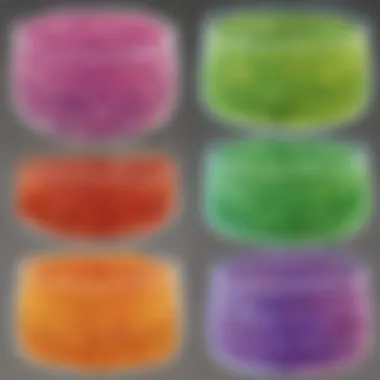

- Borax solutions: Provides a strong bond, making slime firm yet stretchy.
- Contact lens solution: Contains ingredients that help slime maintain flexibility.
- Liquid starch: Easily accessible and gives a unique texture.
- Baking soda and vinegar: Combines to create a fizzing reaction that helps thicken the slime.
Each activator brings its own twist to the slime-making formula, and experimenting with them can lead to different slime textures and consistencies, which is part of the fun.
The Science Behind Activation
The science of slime activation is rooted in chemistry, specifically polymer chemistry. When you add an activator to glue, you change how the individual polymer chains interact with each other. Normally, glue is liquidy and flows easily, but the activator forces those chains to bond, creating a network that traps moisture and air, resulting in a thick, stretchy consistency.
A simple analogy to illustrate this is thinking about spaghetti noodles in a pot of water. The noodles can move freely while they are separate, but once you toss sauce in and stir, they cling together, forming a cohesive dish.
The interaction tends to vary depending on the type of activator:
- With Borax, the combination leads to very buoyant slime due to the strong bonds formed.
- Contact lens solution, due to its unique pH level, offers a gentler bond that maintains elasticity without being too rigid.
Understanding the underlying science provides a platform to expand learning beyond just making slime. It invites discussions on molecular structure, the effects of pH, and even basic laboratory techniques.
"The beauty of slime lies not just in its gooeyness but in the scientific principles it introduces. By playing with proportions and different activators, children can grasp fundamental concepts of how substances interact."
As varied and lively as they are, slime activators open a treasure trove of knowledge just waiting to be discovered. Each experiment lays the groundwork for further scientific inquiry, ensuring that the fun doesn't stop with just making slime.
Different Types of Slime Activators
When it comes to making slime, the choice of activator plays a significant role in determining the texture, consistency, and overall success of the project. Different activators interact with the glue and other ingredients in unique ways, leading to varying slime experiences. Understanding these activators not only fosters creativity but also paints a clearer picture of the science behind slime.
Borax Solutions
Details on Borax Composition
Borax, or sodium borate, is a naturally occurring mineral composed primarily of boron, sodium, and oxygen. It’s a common choice due to its effectiveness in binding glue molecules together, creating that coveted stretchy texture. One interesting aspect of borax is its ability to create a network of polymers when mixed with glue. The unique chemical structure of borax allows it to help the glue form long chains, which results in a more cohesive product. This characteristic makes borax a popular choice for kids and parents looking for a reliable way to enhance their slime-making experience.
Safety Considerations
Though borax is quite effective, it is important to handle it with care. It can be irritating to the skin and eyes if not used properly. Ensuring that children wash their hands thoroughly after using it is a key safety measure. It is also advisable to keep borax out of reach of younger children, as ingestion can lead to serious health issues. Overall, while borax is a champion in the world of slime activators, safety should always be a priority.
Contact Lens Solution
Ingredients in Solution
Contact lens solution is composed primarily of saline and a few other ingredients designed to clean lenses. Common components include boric acid, sodium borate, and various surfactants, which help in achieving a gentler slime consistency. The blend of ingredients is generally safe to use, making it appealing for slime makers. The nice part about using contact lens solution is its dual purpose; it’s not just great for slime, but also has practical uses for those who wear contact lenses.
Why It Works for Slime
The effectiveness of contact lens solution as a slime activator can be attributed to its boric acid content. When mixed with glue, it acts similarly to borax, helping to form that desirable stretchy consistency. This makes it a convenient and user-friendly option for families. However, one should always check for any specific brand formulations that may affect slime quality. It’s like hitting two birds with one stone—activating slime while also keeping one’s eyesight clear.
Liquid Starch
How Liquid Starch Activates the Mixture
Liquid starch, often used in laundry, is another fantastic activator for slime. It contains a type of polymer that reacts with the glue to create a thick and gooey substance. The interaction is pretty straightforward: as you mix liquid starch into your glue, the polymers from the starch link with those in the glue, creating a solid that you can mold and shape. One appealing aspect of liquid starch is that it is easy to work with and can often produce consistent results, ensuring that everyone, from the novice to the seasoned slime maker, can achieve success.
Best Practices for Use
To get the best out of liquid starch, proper measurement is crucial. Using too little can result in a runny mixture, while too much may lead to a stiff, hard slime. A good rule of thumb is to start with a small amount and gradually increase it until you find the sweet spot for your desired texture. It’s also wise to mix thoroughly to ensure even distribution; a hasty approach could lead to lumps forming in the slime.
Baking Soda and Vinegar
The Chemical Reaction Explained
Mixing baking soda and vinegar generates a fascinating chemical reaction, but in the context of slime, it’s all about getting that right texture. The reaction creates carbon dioxide gas, causing fizzing and bubbling. When used effectively, this combination can create a unique type of slime that is somewhat puffy in texture. This choice is great for DIY enthusiasts who wish to introduce a little chemistry into their slime-making process.
Pros and Cons
While baking soda and vinegar can yield interesting results, it’s not without its drawbacks. One major consideration is that the reaction can be quite rapid, which means timing must be on point to capture the perfect slime consistency. Plus, the end product might not have the same pliability as slime made with other activators. However, the excitement of seeing the chemical reaction unfold can make it worth trying, especially for kids keen on science.
PVA and Other Alternatives
Exploring Polyvinyl Alcohol
Polyvinyl alcohol, or PVA, is a synthetic polymer celebrated for its versatility. In terms of slime making, it is often combined with a cross-linking agent like borax or contact lens solution to create that stretchy, gooey goodness. The flexibility of PVA is a major selling point, as it allows for a wide variety of slime textures depending on the chosen activator. Kids love experimenting with it, as it can yield both thick and thin slime depending on the ratios used.
Comparison with Other Activators
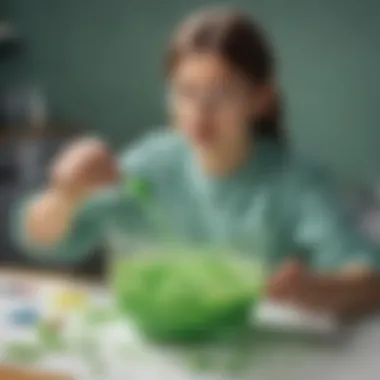
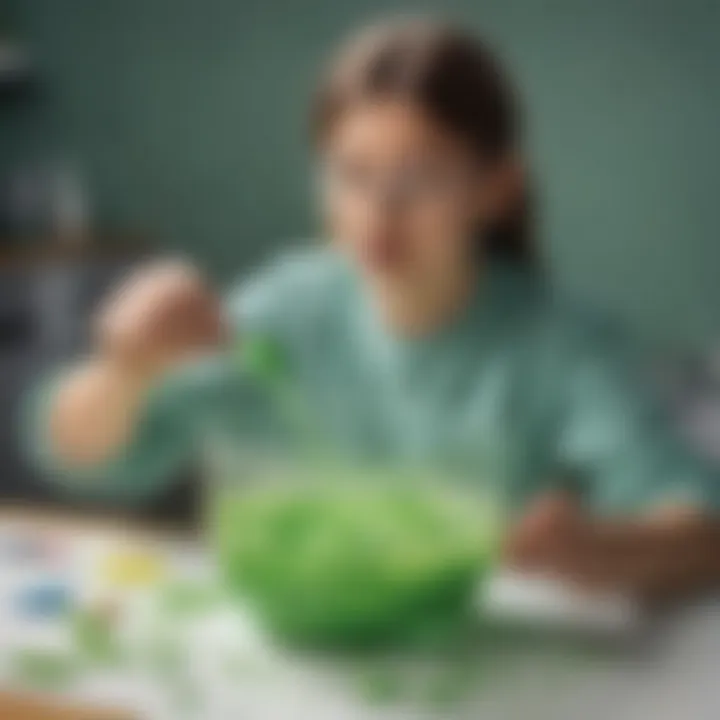
PVA is unique compared to natural activators since its properties are more predictable. While products like baking soda and vinegar rely on immediate chemical reactions, PVA provides more stability in the final product. However, some might find it less accessible in terms of immediate results; it often requires additional components for activation, making it slightly more complex than other simpler activators. Nevertheless, the results can be rewarding and inspire creativity among the younger crowd.
Creating Slime: Step-By-Step Guide
Creating slime is akin to a science experiment right in your kitchen. It offers individuals, especially young learners, hands-on experience with basic chemistry principles. By understanding each stage of slime production, both kids and adults can anticipate outcomes, troubleshoot issues, and fully appreciate the scientific process.
Essential Ingredients
Choosing the Right Glue
The base of any good slime is glue, typically polyvinyl acetate. This type of glue is water-soluble and easy to mix. The transparency or opaqueness of the glue can change the appearance of the slime as well. A common choice among many is Elmer’s School Glue, due to its non-toxic nature and ease of use. Choosing a glue with a smooth consistency can lead to a more delightful slime experience.
One notable feature of Elmer's glue is its ability to bond well with activators, leading to a slime that stretches beautifully. Choosing the right glue is essential, especially if the end goal is to create vibrant and flexible slime. On the flip side, not all glues play nice with every activator, which can lead to a disappointing texture.
Selecting the Activator
Selecting the right activator is like picking the right key to a lock. This is where you decide how your slime will react. Common activators include borax, liquid starch, or contact lens solution. Borax, while effective, can be tricky and requires precise measurements. Liquid starch is generally easier to use and works well without the fuss.
The key characteristic of these activators is that they contain elements that cross-link the glue's long polymer chains, creating that satisfying slime texture. Liquid starch is often favored due to its readily available nature and ease of mixing, but other activators can create different types of slime with unique properties. Each choice offers a distinct texture, and experimenting with various activators can lead to discovering the best fit for one’s slime projects.
The Mixing Process
Proper Ratios for Success
Getting the measurements right is critical. If you’re too heavy-handed with either the glue or activator, your slime could turn into a soupy mess. The perfect ratio usually hovers around one part glue to one part activator, but tweaking these proportions can yield different results. Finding this sweet spot is key for achieving the ideal gooey stretchiness that defines slime.
An important point about ratios is that they can dictate the final product’s fluidity or firmness. Adhering closely to recommended ratios can save a lot of headaches later, especially when troubleshooting slime consistency.
Combining Ingredients Effectively
The method of mixing also matters. Stirring diligently but gently can help incorporate air without making your mixture overly bubbly. This is where the slime begins to take shape. The process can be both engaging and educational, as children can see the transformation of individual ingredients into a cohesive substance.
Highlighting a unique feature of combining ingredients effectively means being mindful of the order of operations; adding activators too quickly can lead to clumping. So, take it slow. Being deliberate in this step enhances the likelihood of producing a successful slime batch and gives a sense of accomplishment.
Troubleshooting Common Issues
Overactivating Slime
Sometimes, in the heat of excitement, it’s easy to toss in too much activator. Overactivating can make the slime feel stiff and less enjoyable to stretch. Recognizing the characteristics of overactivated slime is vital; it generally becomes so rigid that it breaks instead of stretching. It’s essential to regulate how much activator is used and take a more gradual approach when mixing.
In cases where slime has been overactivated, there’s usually a way to rescue the batch by adding more glue or a bit of warm water to dilute the activator’s effect.
Dealing with Residue
Residue can be one of the more frustrating aspects of slime-making, especially when it clings to surfaces or hands. Parts of the mixture may stick to your fingers or utensils, making cleanup a headache. One effective strategy is to keep a bowl of warm soapy water nearby while crafting. Soaking hands or tools in this can instantly ease the cleanup process.
Involving young learners in the cleanup can also teach responsibility and mindfulness about the environment, which is another bonus of creative activities like slime-making. Understanding how to manage residue effectively emphasizes the importance of a tidy workspace, an essential skill in any scientific endeavor.
Remember: Making slime is not only about the fun of gooey textures; it's about embracing the scientific method through experimentation and hands-on learning.
Safety Practices in Slime Making
Safety practices in slime making are crucial, not only to foster a worry-free environment but also to cultivate good habits among young learners. Engaging children in slime activities often involves various substances that, while generally safe, can still present risks if not handled properly. By being aware of these practices, parents and educators can ensure that the exploration of slime crafting is both enjoyable and educational.
Analyzing Chemical Safety
When it comes to analyzing chemical safety during slime making, understanding the components that go into the concoction is paramount. Children should be aware of the importance of reading labels and adhering to recommended measurements. Too much of a chemical can lead to issues in slime consistency, while too little may keep the mixture liquid.
Dangers of Incorrect Measurements
Incorrect measurements can lead to unexpected outcomes when making slime. For example, if a person adds too much activator, the mixture can become hard and difficult to manipulate. This could lead to disappointment for children who are excited about their creations. Moreover, in some cases, excessive use of substances like borax can pose health risks. While borax is effective, too much exposure can cause skin irritation. This emphasizes why it's crucial to follow the recipe guidelines closely and keep a keen eye on quantification. Since safety is a vital aspect of this article, correct measurement acts as a foundation for forming safe and enjoyable slime.
Storage and Disposal Considerations
Storage and disposal considerations play a significant role in ensuring the safety of slime-making activities. After kids finish their projects, it's essential to store slime in airtight containers. This not only prolongs the shelf life of their creations but also prevents unintentional access to young children or pets that might promote tripping hazards. Additionally, any leftover chemicals or dyes should be disposed of properly, following local guidelines. Just tossing them in the trash isn't the way to go. Instead, proper disposal reduces any risk to the environment and adheres to safety protocols. For instance, referring to the specific disposal instructions on product labels will help in maintaining this aspect.
Remember: Safety should always be the top priority when making slime, ensuring a fun experience for everyone involved.
Supervised Activities for Children
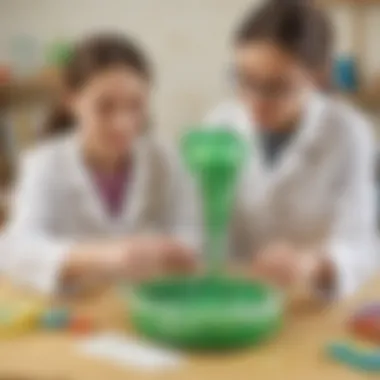
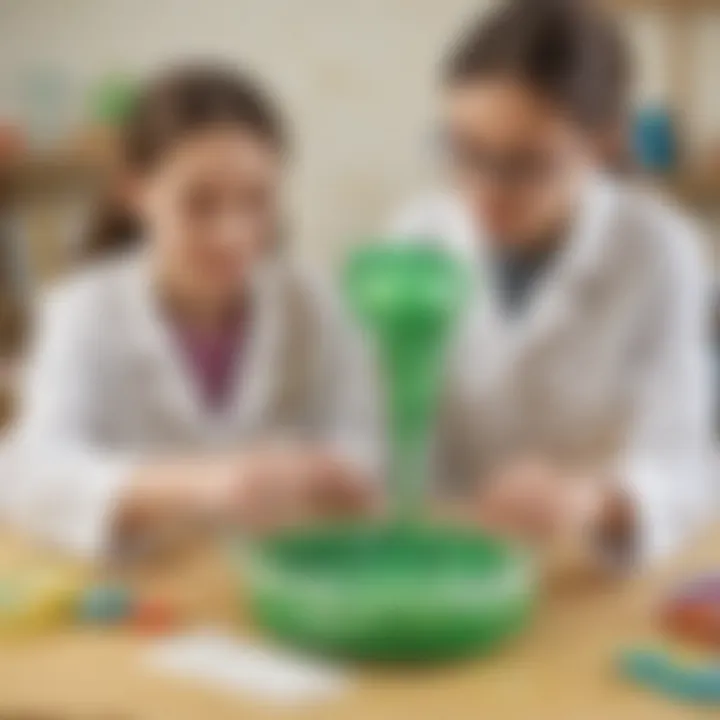
When conducting slime-making activities, supervision is essential to ensure safety while also promoting learning. Children can discover a wealth of knowledge when they experiment with different activators and ingredients, but they also need guidance to navigate potentially hazardous situations. For instance, using scissors to cut open packaging, pouring ingredients accurately, and even cleaning up afterward all require adult involvement. Having a knowledgeable adult present doesn't just minimize risks but also encourages children to ask questions, enhancing their understanding of the materials they are working with. This makes slime making not just an art project but an engaging session where science meets creativity.
The Educational Value of Making Slime
Creating slime may appear to be sheer fun and games, yet underneath the vibrant colors and stretchy textures lies a wealth of educational value. Engaging with slime-making activities promotes various learning opportunities that extend beyond the mere tactile experience that children come to love. This section aims to unpack the significant benefits associated with making slime, emphasizing its relevance in enhancing scientific literacy among young learners.
In this hands-on activity, children are not just mixing ingredients; they are stepping into the role of scientists, mathematicians, and creative thinkers. There is a tangible transformation that occurs from the moment simple elements come together to form a gooey substance. The process fosters exploration, where curiosity leads to questions like "What will happen if I add more activator?" or "How does changing the glue affect the texture?"
"Experiments are the key to discovery—through making slime, children learn to hypothesize and observe outcomes."
Encouraging Scientific Inquiry
When children get involved in slime-making, they develop a natural inclination to investigate. It’s not just about satisfying a sensory desire; it’s also about prompting thoughtful inquiry. With every stir of the bowl, a young learner can hypothesize about what might occur next based on their previous experiences with different activators or food colors. This inquiry-led approach nurtures key scientific skills such as prediction, observation, and experimentation.
Consider how the mixing of vinegar and baking soda creates a fizz. A child may wonder, "Why does this happen?" This sparks discussions about chemical reactions and the significance of proportions in recipes. Such discussions are vital; they invite children to think critically about the mechanics of how this concoction forms different textures and colors, depending on the methods used. Children learn to ask better questions, equipping them for future scientific endeavors.
Understanding Properties of Matter
At the heart of slime is a fascinating exploration of the properties of matter. Children come face-to-face with concepts such as viscosity, elasticity, and solubility, all while manipulating their ingredients.
Slime can be viewed as a whimsical three-dimensional representation of complex scientific principles. The act of stretching slime brings forward the idea of physical changes, demonstrating how substances can alter in form without losing their intrinsic properties. By varying amounts of ingredients or trying out different activators, kids literally watch the changes occur right before their eyes, which makes these concepts more accessible.
In a more detailed sense, when gel-like substances are crafted, learners begin to grasp the difference between solids, liquids, and gases. The moment slime slips through fingers and forms a puddle illustrates the nature of liquid behavior. Each experimental session cultivates an atmosphere of enlightenment and discovery.
Creative Variations and Experiments
Engaging in slime-making provides not only a fun hands-on experience but also a chance to dive into creativity and experimentation. When we talk about creative variations and experiments, it encompasses more than just mixing glue and an activator; it’s about transforming simple goo into a myriad of textures, colors, and even scents. This segment illustrates how to take a popular activity and add a splash of imagination, allowing children, parents, and educators alike to explore new realms of science and artistry together.
Adding Color and Texture
Vibrant colors and varying textures are key elements that can elevate the slime experience. Adding color can be as simple as mixing in food coloring or purchasing specialized slime dyes that come in an array of hues. The process of selecting colors can foster creativity—children often enjoy matching colors to themes, like holidays or seasons. For instance, a bright green slime might echo the upcoming spring, while a deep orange hue could represent autumn.
But what about texture? This is where the fun truly begins! Incorporating materials like glitter, foam beads, or even sand can fundamentally change the way slime feels. Here’s a quick breakdown of some ideas to consider:
- Glitter: Adds a sparkly flair, making the slime visually appealing.
- Foam Beads: Introduces a fluffy texture, transforming how the slime moves.
- Sand: Gives a gritty feel, making the slime moldable like a soft sand sculpture.
Every variation presents an opportunity for discovery. Mixing textures might yield unexpected results, leading to conversations about properties of materials and how they interact with one another. Experimentation could mean making the fluffiest slime or the shiniest one—science is truly at play.
"Experimentation is the mother of knowledge. Slime is a canvas, let creativity run wild!"
Incorporating Natural Ingredients
Now, venturing into the world of natural ingredients can be both an educational and ethical choice. Many parents are becoming more conscious of the products they use at home. By substituting traditional slime ingredients with more natural variants, one can create an experience that is not just fun, but also environmentally friendly. Natural options also ensure that children remain safe while playing.
For example, using cornstarch instead of glue can create a different type of slime, often called oobleck. It’s fascinating for children to observe how different ratios of cornstarch and water affect the slimy stability.
Here are a few notable natural ingredients that can be utilized:
- Cornstarch: Mix with water for a delightful oobleck, ideal for sensory play.
- Agar-Agar: A seaweed-based product that can form a jelly-like slime when heated.
- Natural Dyes: Such as beet juice or turmeric, can be a hands-on way to add color that is also safe.
Using these ingredients can help children appreciate the value of environmentally friendly practices and encourage discussions about sustainability. Integrating learning with creativity provides an enriching pathway for young minds.
In summary, creative variations and experiments can turn a simple slime session into a multifaceted activity that promotes creativity, science, and environmental awareness. Such explorations enrich the experience and stimulate learning in unexpected ways.
Closure: The Future of Slime Activators
In the ever-evolving world of children’s activities, slime making remains a front-runner, captivating the imaginations of countless young learners. As we look to the future of slime activators, it becomes evident that this popular pastime is not just a fleeting trend; it holds educational and developmental possibilities that could shape science learning in new ways.
Evolving trends in slime making often reflect advancements in science, technology, and even environmental consciousness. With parents and educators increasingly concerned about safety and sustainability, it’s crucial to consider how new activators can meet these needs while retaining that gooey, stretchy fun that kids love. The use of natural ingredients is gaining traction, with discussions around plant-based activators or homemade options emerging in various communities. These trends indicate a move towards a more holistic understanding of slime, where the fun doesn’t compromise on safety or environmental impact.
"Slime is not just a gooey mess; it’s a bridge to scientific exploration for young minds."
Evolving Trends in Slime Making
The landscape of slime making is morphing, driven not just by the sheer fun of it but also by connecting activities with scientific inquiry. Children today are increasingly exposed to concepts of STEM (Science, Technology, Engineering, Mathematics) at a young age. Slime, as it turns out, ticks many boxes in engaging with these concepts.
- Natural Activators: There's a growing interest in using ingredients like organic starches or gelatin. These offer safe alternatives to traditional activators while also being biodegradable, which appeals to the eco-conscious.
- Experimental Techniques: Educators are integrating slime-making into the curriculum as a hands-on approach to teaching properties of matter, solubility, and the states of matter.
- Customization and Personalization: The trend leans towards making slime that reflects individual creativity, from color mixing to the use of scents and textures. This encourages experimentation and encourages kids to think critically about mixtures and reactions.
These trends signify a shift in not just what slime can be, but also how the process of making slime can serve as a catalyst for deeper understanding of science.
Potential New Activators on the Horizon
Looking ahead, it’s worth pondering what the future holds for slime activators. Innovations in materials and a heightened awareness of environmental impact could lead to exciting developments. Here are some potential new activators that could reshape the slime landscape:
- Eco-friendly compounds: There’s ongoing research into biodegradable materials that could replace traditional activators. These might further reduce wastage and environmental footprints while maintaining the enjoyable gooeyness of slime.
- Microbial Activators: There’s potential for using plant-based enzymes as activators. This would introduce kids to concepts of biochemistry at a young age.
- DIY Kits Using Recyclables: The future could see kits that allow children to create slime with recycled materials, saving money while also promoting ingenuity.
As the world becomes more environmentally aware, the ingredients we use for such fun activities will undoubtedly reflect that shift. Encouraging creativity, safety, and science all at once, the future of slime activators seems bright, directly engaging the minds of upcoming generations.



